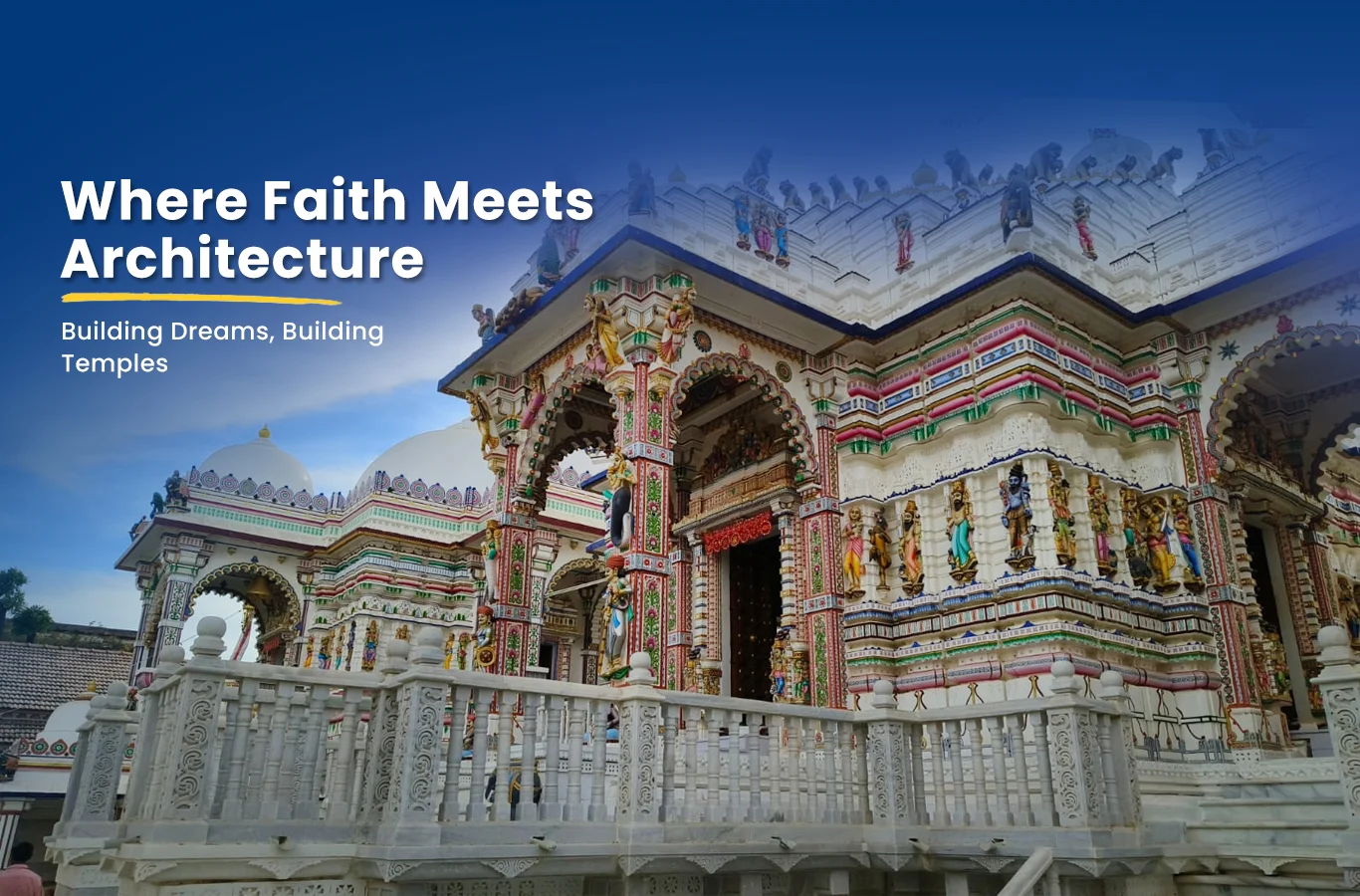Modern temple construction is evolving to embrace sustainability, blending tradition with innovative practices. This shift addresses environmental concerns while maintaining the sacredness and cultural significance of temples. Across India, including Rajasthan, Temple Architects and construction services are redefining the way temples are built. Let’s explore how sustainable practices are transforming temple construction and why they matter.
The Importance of Sustainability in Temple Construction
Sustainability in temple construction involves using eco-friendly materials, conserving natural resources, and minimizing environmental impact. Temples are often built to last for centuries, making it crucial to ensure they are environmentally sustainable and culturally respectful.
In India, where temple construction is both a spiritual and architectural marvel, adopting sustainable practices is an ethical and practical choice. This shift not only reduces environmental degradation but also aligns with the principles of dharma, which emphasize harmony with nature.
Role of Temple Architects in India
Reviving Traditional Practices
Temple Architects in India, also known as Sthapatis, are instrumental in integrating traditional knowledge with modern sustainable techniques. They use principles from ancient texts like the Shilpa Shastra while incorporating modern innovations.
For instance, traditional methods of using natural stones, lime plasters, and natural ventilation systems are being revived. These practices not only reduce energy consumption but also ensure that the structures are durable and environmentally friendly.
Modern Tools and Technology
Temple Architects in India are increasingly utilizing advanced tools like 3D modeling and Building Information Modeling (BIM) to plan and execute sustainable designs. These technologies help optimize resource utilization and reduce construction waste.
By combining ancient wisdom with modern technology, these architects create temples that are both aesthetically pleasing and environmentally sustainable.
Sustainable Materials in Temple Construction
Locally Sourced Materials
Using locally sourced materials is a cornerstone of sustainable temple construction. In Rajasthan, for instance, the abundant availability of sandstone and marble makes it an ideal choice for temples. These materials not only reduce transportation costs but also blend seamlessly with the local environment.
Renewable and Recycled Materials
Modern Temple Construction Services in Rajasthan and other states are incorporating renewable materials like bamboo and recycled wood. These materials are used for ancillary structures, interiors, and decorative elements.
Eco-Friendly Alternatives
To replace conventional cement, construction services are opting for eco-friendly alternatives like fly ash bricks and lime-based plasters. These materials have a lower carbon footprint and enhance the thermal insulation of the building.
Energy Efficiency in Temple Design
Passive Cooling and Ventilation
One of the key aspects of sustainable temple construction is designing for natural cooling and ventilation. Traditional Indian temples often have high ceilings, open courtyards, and intricately carved windows, which allow natural light and air circulation.
Modern designs continue to incorporate these features, reducing the need for artificial cooling and lighting.
Solar Energy
The use of renewable energy sources like solar panels is becoming a common practice in modern temple construction. These panels power lighting, fans, and other electrical needs, significantly reducing energy consumption.
Water Conservation
Sustainable practices also extend to water management. Rainwater harvesting systems and efficient drainage designs are integrated into temple construction to conserve water and maintain ecological balance.
Temple Construction Services in Rajasthan: A Case Study
Adapting to Local Environments
Rajasthan, with its arid climate and rich heritage, presents unique challenges and opportunities for sustainable temple construction. Leading Temple Construction Services in Rajasthan are setting benchmarks by adapting to local conditions and using region-specific materials and designs.
Use of Sandstone and Marble
Sandstone and marble, iconic to Rajasthan’s architecture, are not only aesthetically pleasing but also highly durable and sustainable. These materials are mined responsibly to ensure minimal environmental impact.
Community Involvement
Many temple construction services in Rajasthan involve local artisans and communities in the building process. This approach not only preserves traditional craftsmanship but also promotes economic sustainability.
Benefits of Sustainable Temple Construction
Environmental Impact
Sustainable practices significantly reduce carbon emissions, waste generation, and resource depletion. By using renewable energy and eco-friendly materials, modern temples contribute to a healthier environment.
Longevity and Maintenance
Structures built with sustainability in mind are often more durable and require less maintenance. This reduces long-term costs and ensures that the temple remains a place of worship for generations.
Cultural Preservation
By blending traditional methods with modern practices, sustainable temple construction helps preserve India’s rich cultural heritage. It ensures that temples remain symbols of spiritual and architectural brilliance.
Future of Sustainable Temple Construction
Integration of Green Certifications
As awareness grows, many temple projects are seeking green certifications like LEED (Leadership in Energy and Environmental Design). These certifications ensure adherence to global sustainability standards.
Innovations in Materials and Design
The future of temple construction will likely see innovations in materials, such as the use of bio-concrete and self-healing materials. Designs will become more energy-efficient and environmentally conscious.
Increased Collaboration
Collaboration between temple architect in India , construction services, and environmental experts will drive the adoption of sustainable practices. This multidisciplinary approach will ensure that temples continue to inspire and serve their communities responsibly.
Conclusion
Sustainable practices in modern temple construction are not just a trend but a necessity. Temple Architects in India and Temple Construction Services in Rajasthan are at the forefront of this transformation. By embracing eco-friendly materials, energy-efficient designs, and traditional wisdom, they are creating temples that honor both nature and spirituality. As this movement grows, it will redefine how we build sacred spaces, ensuring they remain timeless symbols of harmony and sustainability.

